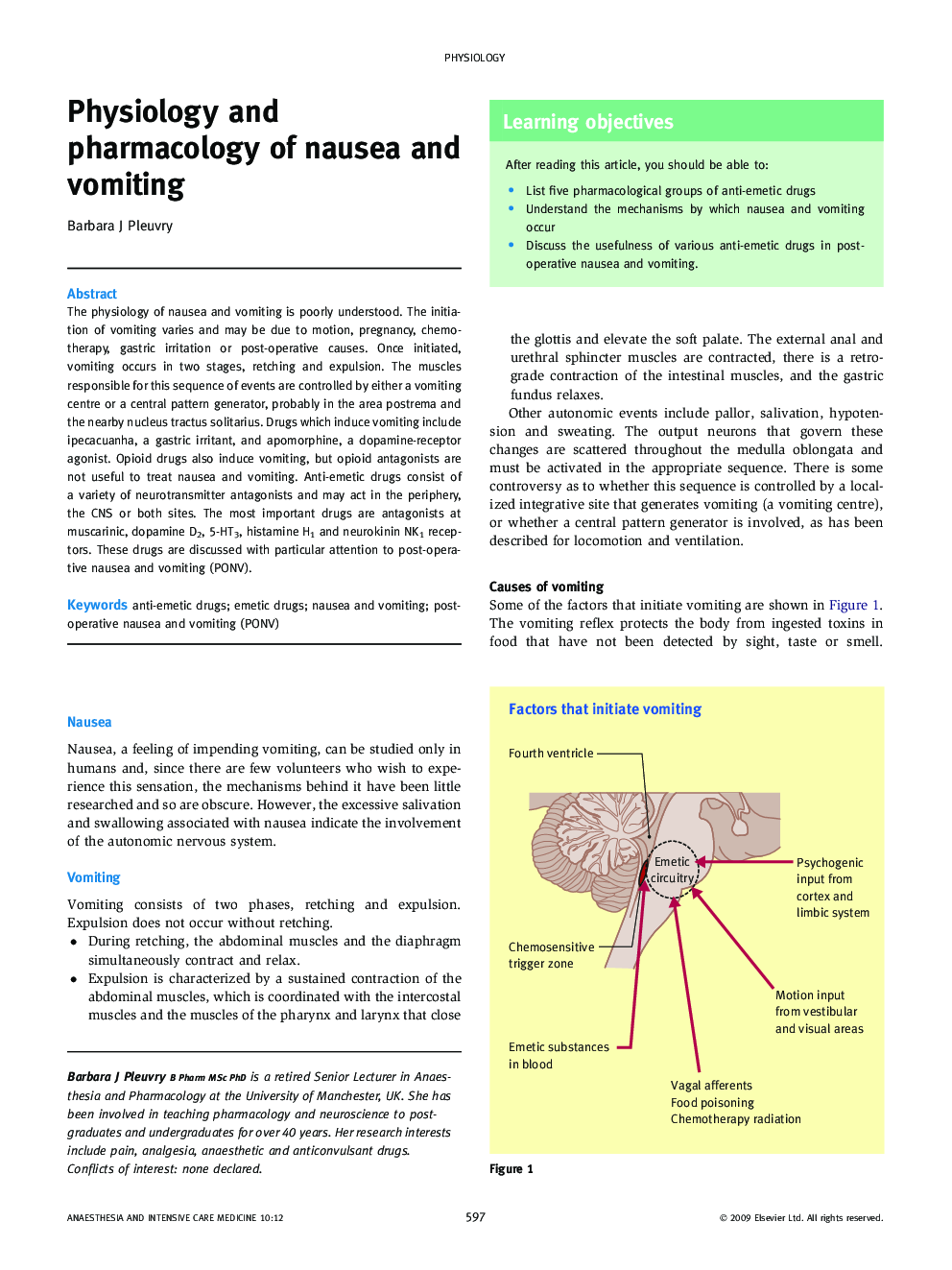| Article ID | Journal | Published Year | Pages | File Type |
|---|---|---|---|---|
| 2743298 | Anaesthesia & Intensive Care Medicine | 2009 | 5 Pages |
The physiology of nausea and vomiting is poorly understood. The initiation of vomiting varies and may be due to motion, pregnancy, chemotherapy, gastric irritation or post-operative causes. Once initiated, vomiting occurs in two stages, retching and expulsion. The muscles responsible for this sequence of events are controlled by either a vomiting centre or a central pattern generator, probably in the area postrema and the nearby nucleus tractus solitarius. Drugs which induce vomiting include ipecacuanha, a gastric irritant, and apomorphine, a dopamine-receptor agonist. Opioid drugs also induce vomiting, but opioid antagonists are not useful to treat nausea and vomiting. Anti-emetic drugs consist of a variety of neurotransmitter antagonists and may act in the periphery, the CNS or both sites. The most important drugs are antagonists at muscarinic, dopamine D2, 5-HT3, histamine H1 and neurokinin NK1 receptors. These drugs are discussed with particular attention to post-operative nausea and vomiting (PONV).
